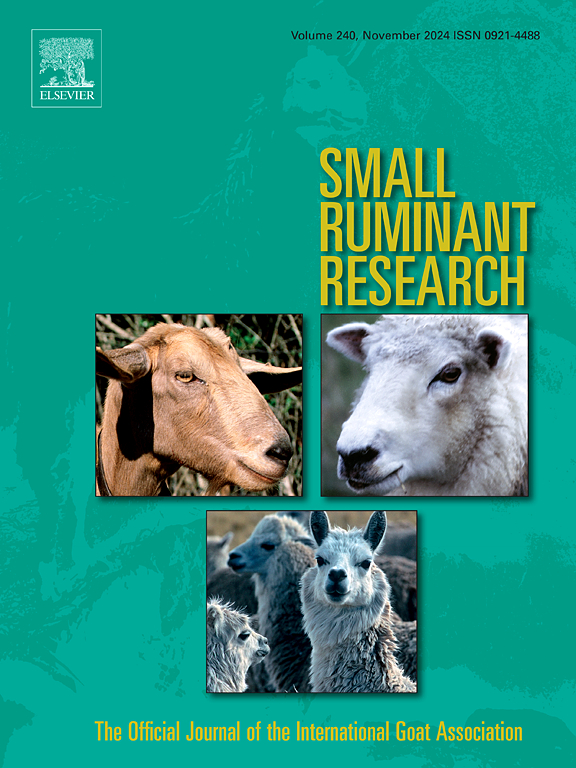拉脱维亚黑头羊群体遗传多样性分析
IF 1.6
3区 农林科学
Q2 AGRICULTURE, DAIRY & ANIMAL SCIENCE
引用次数: 0
摘要
本研究旨在利用遗传资源拉脱维亚黑头老羊(LTV)品种群体的系谱资料,对遗传多样性、近交水平和有效群体大小等参数进行评价。该研究基于2020年存活的遗传资源公羊和母羊谱系数据。从1976年起,共有2295 - 1817只动物(407只公羊和1410只母羊)有后代,478只没有后代。从2000年开始,四代完成度逐步提高,达到70% %以上。在2020年,第一代的系谱完整性(PC)为100 %,第四代为90 %左右。近交系动物LTV谱系平均代数为10.2±0.07代。数据集中近交系数为1177头,平均近交系系数为2.75 %。活畜种群近交率下降,达到2.36% %,但有7.4% %的活畜近交率大于5% %。在过去的五年中(2015 - 2020年),LTV种群中的Ne数量从124只减少到2020年的108只。LTV群体遗传多样性的变化可以解释为LTV育种计划的更大限制,从2015年开始,只有LTV为100 %的纯种动物被接受为遗传资源或LT老式羊品种。本文章由计算机程序翻译,如有差异,请以英文原文为准。
Analysis of genetic diversity in latvian darkheaded sheep population
The purpose of this study is to evaluate the parameters of genetic diversity, the level of inbreeding and effective population size based on pedigree data in genetic resources Latvian Darkheaded Old Type (LTV) sheep breed population. The study was based on genetic resources rams and ewes pedigree data that were alive in 2020. The pedigree data is available from 1976 with a total number of animals 2295 – 1817 (407 rams and 1410 ewes) with and 478 without progeny. Starting from the 2000 four generations completeness progressively increased and was higher than 70 %. In 2020, the pedigree completeness (PC) for the first generation was 100 % and for the fourth generation was around 90 %. The average number of generations in the LTV pedigree for inbreed animals is 10.2 ± 0.07 generations. The number of inbreed animals in data set was 1177 with an average inbreeding coefficient 2.75 %. A positive change was found in the population of alive animals, where the level of inbreeding decreased and reached 2.36 %, however, 7.4 % of alive animals have a level of inbreeding greater than 5 %. The number of Ne in the LTV population within the last five years (2015 – 2020) is decreasing from 124 and in 2020 reached 108 animals. The changes in genetic diversity of the LTV population are explainable due to the greater restrictions in the LTV breeding programme, where from 2015 only purebred animals with 100 % LTV were accepted as genetic resources or the LT old-type sheep breed.
求助全文
通过发布文献求助,成功后即可免费获取论文全文。
去求助
来源期刊

Small Ruminant Research
农林科学-奶制品与动物科学
CiteScore
3.10
自引率
11.10%
发文量
210
审稿时长
12.5 weeks
期刊介绍:
Small Ruminant Research publishes original, basic and applied research articles, technical notes, and review articles on research relating to goats, sheep, deer, the New World camelids llama, alpaca, vicuna and guanaco, and the Old World camels.
Topics covered include nutrition, physiology, anatomy, genetics, microbiology, ethology, product technology, socio-economics, management, sustainability and environment, veterinary medicine and husbandry engineering.
 求助内容:
求助内容: 应助结果提醒方式:
应助结果提醒方式:


